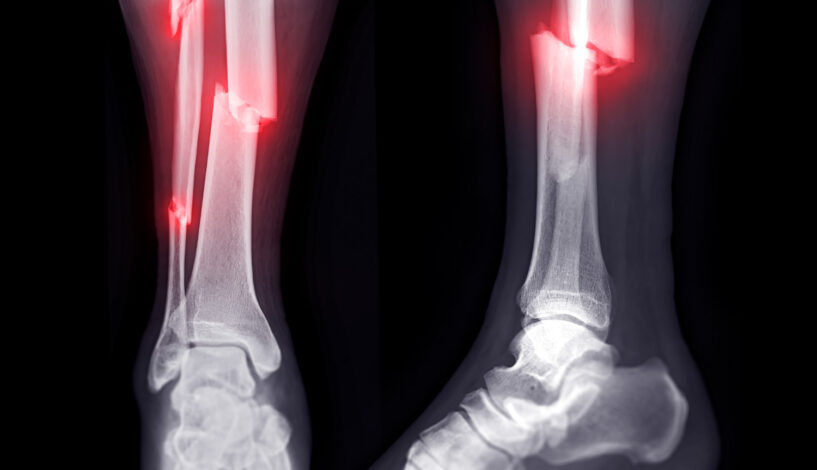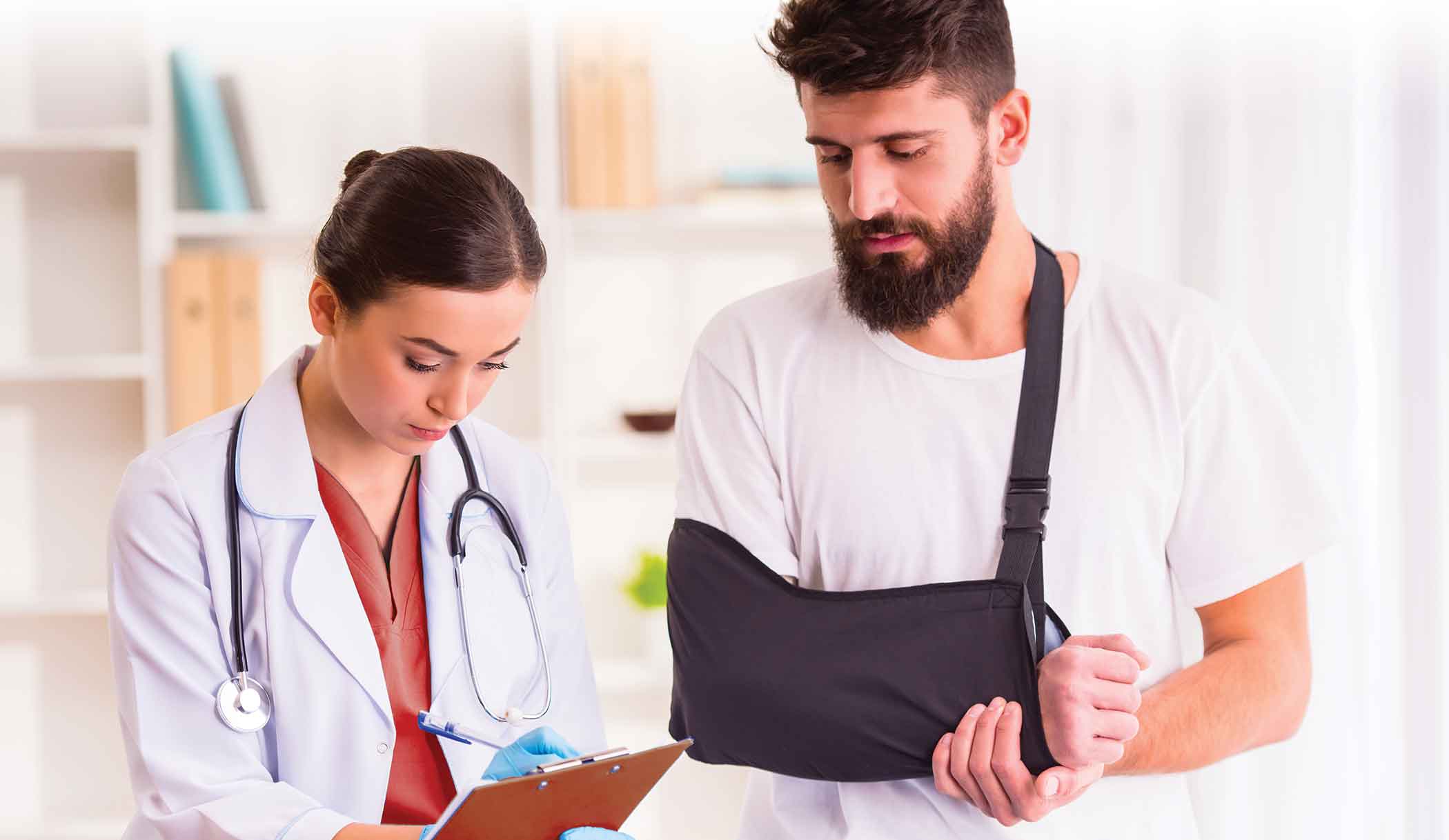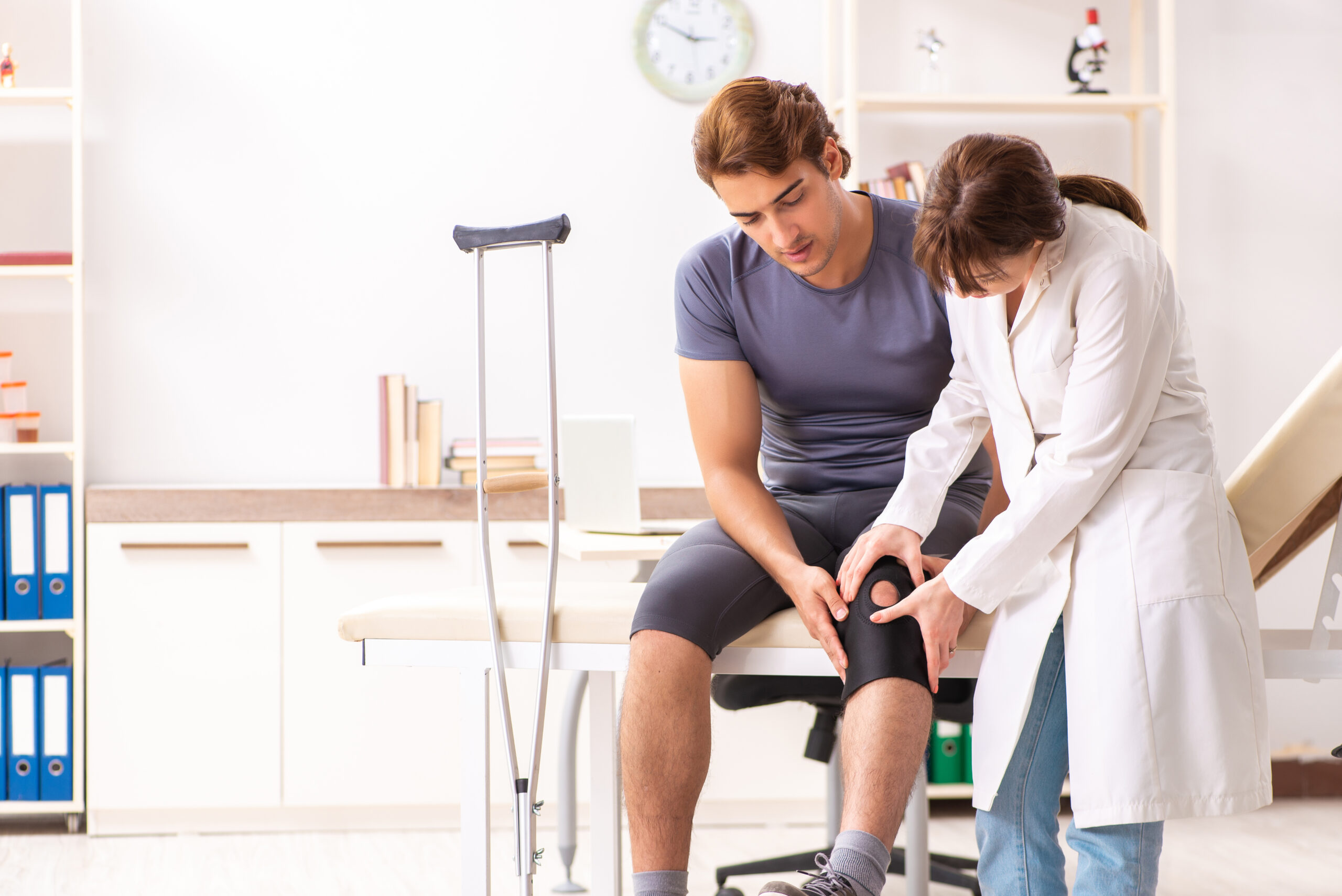
What Is a Compound Fracture?
A bone fracture is another term for a broken bone, and it can happen in any bone in the body. There are several different types of fractures that can occur, but in this article, we are looking at what a compound or “open” fracture is.
We are also going to cover the symptoms, what actions to take if you sustain a compound fracture, what can cause them, and how they are diagnosed and treated.
What Is a Compound Fracture?
When there is a break or crack in a bone and it is visible outside of the skin, this is considered a compound fracture, also known as an open fracture. The piercing of the skin is what makes it “compound” and distinguishes it from a simple or closed fracture, which does not break any skin.
Compound fractures are caused by severe trauma — usually high-velocity and high-impact forces. Examples of this type of force include a car accident, a high fall from a ladder, or a football tackle or hit.
Compound fractures can have different degrees of severity. How bad an individual break is is determined by multiple factors:
- Amount of damage to the bone
- Amount of damage to the soft tissues surrounding the break, including the muscles, ligaments, tendons, skin, etc.
- How much the wound has been contaminated with exterior substances like dirt, sand, or grease
- If any major blood vessels around the wound have been disrupted
A compound fracture can be very painful and serious — do your best to stay calm and get help.
Where Do Compound Fractures Occur?
This specific type of fracture usually happens in one of your limbs. Specifically, your arms, legs, hands, and feet are most vulnerable — the lower leg is a particularly common part of the body to experience compound fractures.
Because of this, if you’re doing something that is potentially high-impact, you should take extra precautions to protect your limbs. If you’re driving, wear a seatbelt. If you’re skating or rollerblading, wear pads. If you’re playing a contact sport, wear appropriate protective equipment.
What Are Some Common Compound Fracture Symptoms?
In addition to being able to see part of the bone through the skin, expect these symptoms to accompany a compound fracture:
- Severe and sharp pain
- Extreme tenderness to the touch
- Swelling and bruising
- Excessive bleeding
- Potential nerve damage
How Dangerous Is a Compound Fracture?
The short answer is that a compound fracture is fairly dangerous, but the severity of the injury can vary. A compound fracture is considered dangerous due to two main factors:
Infection
Because the inside of the skin is exposed to external elements, harmful bacteria are more likely to seep into the wound, leading to infection. Any form of open wound has the potential to become infected and should be treated promptly.
Healing Complications
Due to the number of different body tissues involved in a compound fracture, there is a risk that they will take longer than normal to heal, needing surgery to promote recovery.
What Should You Do If You Think You Have a Compound Fracture?
If you or a loved one has sustained a compound fracture and you can see bone through the surface of the skin, dial emergency services immediately or get to the nearest hospital as soon as possible.
Because of the high risk of infection, it is better if someone with a compound fracture is transported to a hospital by ambulance. This way, the break can be bandaged/wrapped and the patient can receive antibiotic medication without waiting.
Here are a few other important things to keep in mind:
- The wounded person needs to stay as still as possible while waiting for an ambulance to arrive or while getting to the hospital — movement will be very painful and can worsen tissue damage.
- Don’t try to do any aligning on the affected body part yourself — only trained medical professionals are capable of doing this when equipped with the right splinting supplies. Incorrect handling can do further damage and even contaminate the fracture.
- If you can, try to keep the area of the break as clean as possible — protect it from unclean surfaces, especially the ground.
How Is a Compound Fracture Diagnosed?
Because the effects of a compound fracture are visible, it is fairly easy for health care providers to recognize during a simple physical examination.
That said, the healthcare provider may also need to take X-ray scans, a CT scan, or other imaging tests of the fractured bone. This is to see exactly where the break has happened and is necessary to determine how the bone fragments need to be aligned in the affected area.
If a provider determines that an X-ray may not be sufficient in assessing the damage, they may require a more detailed scan, like an MRI (magnetic resonance images) scan or a CT (computed tomography) scan.
When diagnosing a compound fracture, a few more things need to be checked in anticipation of complications:
- Any discoloration of the skin and the skin’s temperature
- Vitals including pulse and blood pressure
- Signs of nerve damage around and beyond the area of the wound
- Patient history of medical conditions
What Are Compound Fracture Treatment Options?
Proper treatment of a compound fracture involves five main components:
- Protection: Protect the wound as much as possible before getting to a hospital. This means wrapping it with something clean to avoid infection and keeping weight off the joints surrounding the break.
- Rest: Taking all pressure off of the area will help the fracture heal faster.
- Ice: Icing around the area can bring down swelling, just be cautious of contaminating the wound.
- Compression: This will help to keep the body part in place and is usually accomplished with a cast.
- Elevation: Raising the wound above the level of your heart can reduce swelling in the area.
At the hospital, the initial stage of treatment will consist of pain relief medications, nerve blocking medications, and antibiotic medications to fight against the risk of infection.
Next, a surgeon will then have to shift the bones back into their more natural place to allow them to heal correctly. During this procedure, they may place hardware like pins, rods, plates, and screws into the bone to help with alignment.
Lastly, the area of your body will be immobilized with a cast.
What Should I Know About the Healing Process for a Compound Fracture?
Your bones need time to create new tissues. These tissues start soft but grow harder and stronger over the healing phase.
The first part of healing involves inflammation and swelling, which is your body’s initial immune response to the fracture. The second part is when your body begins to repair the bone — it’s very important to avoid movement for a few weeks to a few months. Then, over the course of a few more months, the bones will “remodel” — becoming less fragile and returning to a more normal shape.
Fast Pace Health Fracture Treatment
Although a compound fracture is a medical emergency and should be handled at a hospital — other types of less severe fractures can be treated at our urgent care clinics. We have the necessary equipment and staff to treat small breaks.
Many Fast Pace Health locations offer further orthopedic care, where our providers are capable of helping with an array of conditions beyond fractures. We implement the most up-to-date technologies in orthopedic medicine, whether it be diagnosis or treatment techniques, and invite patients back for follow-up visits to track recovery progress.
Other conditions treated by our orthopedic care teams include:
- Arthritis assessment & treatment strategies
- Hand and wrist pain
- Foot and ankle pain
- Elbow pain
- Back and neck pain
- Shoulder pain
- Hip pain
- Knee pain
- Casting
- Splinting and bracing
- Sports injuries assessment and treatment strategies
- Sports physicals
- Workers’ compensation injuries assessment & treatment strategies
Summary
Compound fractures are a serious and often scary injury. If you or a loved one has sustained one, try your best to stay calm and get medical attention as soon as possible. Always wear protective equipment when playing a contact sport and take safety precautions when driving, skating, or taking part in another potentially dangerous activity.
Sources:
Related Resources


